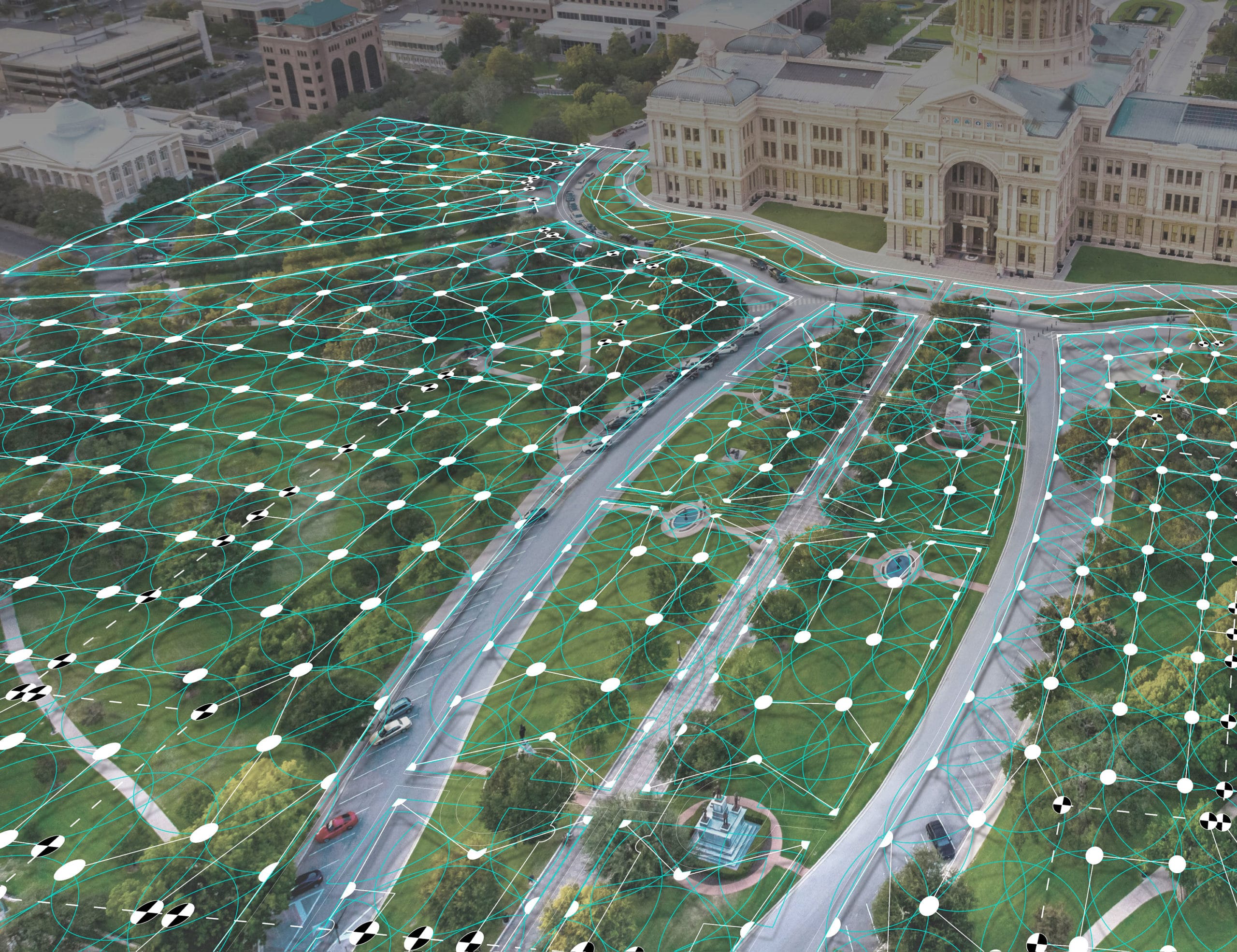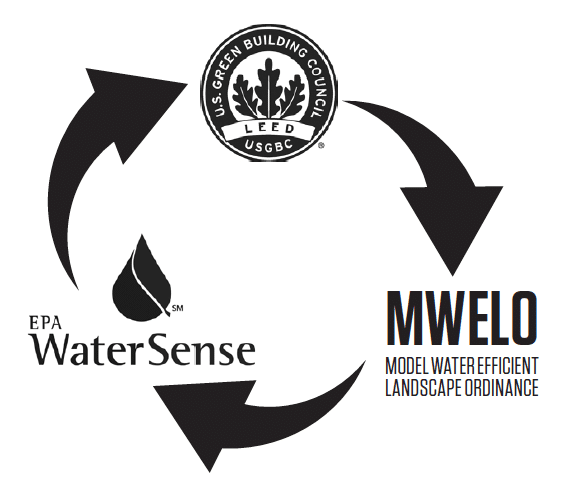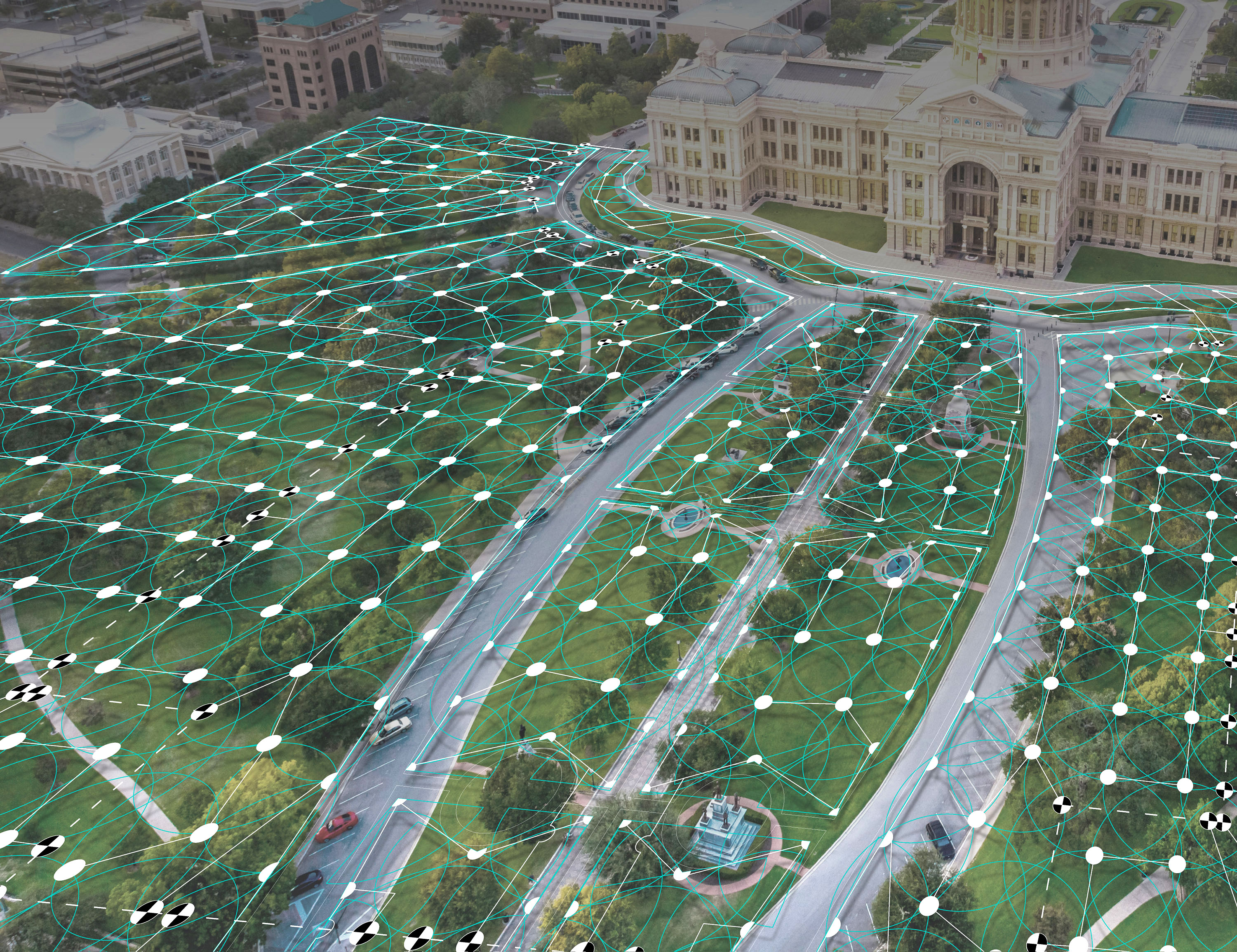
Scientific data is at your fingertips and helps you ensure you save water, time, and money with Vectorworks’ new irrigation design toolset, taking your design from on-screen to real life
 Download a PDF of this story here.
Download a PDF of this story here.
To learn more about the irrigation tools, visit Vectorworks.
Wasted water has been a top issue troubling irrigation professionals for years. While the pros have long done the best they can to meet clients’ irrigation design needs in a sustainable way, the tools are only just now available to truly predict, measure, and meet precise water needs, whether you’re a landscape architect, irrigation contractor, or urban planner.
The EPA estimates that as much as 50% of the water applied in landscape irrigation is wasted due to overwatering caused by inefficiencies in irrigation methods and systems. Nationwide, landscape irrigation is estimated to account for nearly one-third of all residential water use, totaling to nearly 9 billion gallons per day.
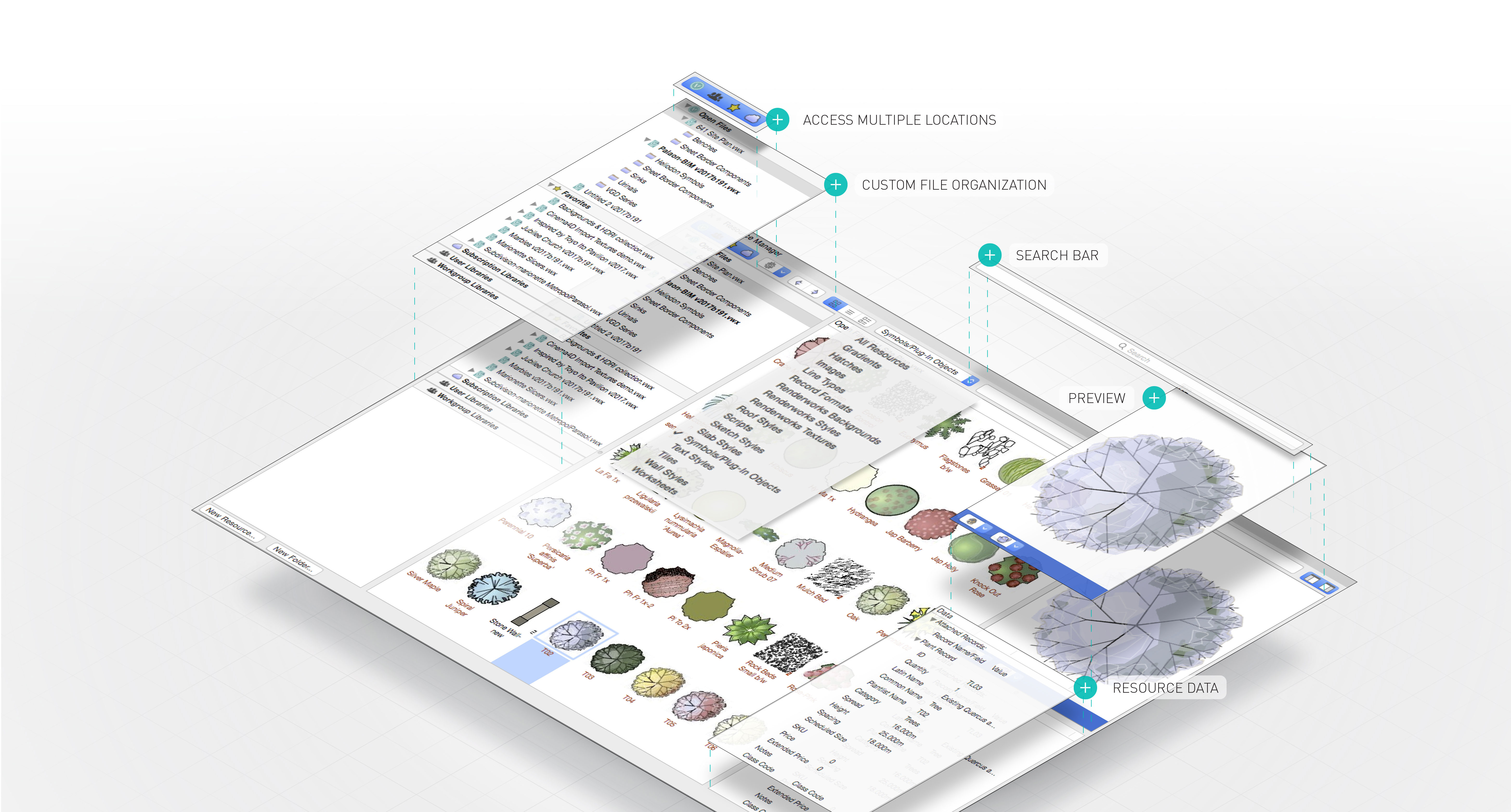
[Courtesy of Vectorworks]
Vectorworks resource manager.
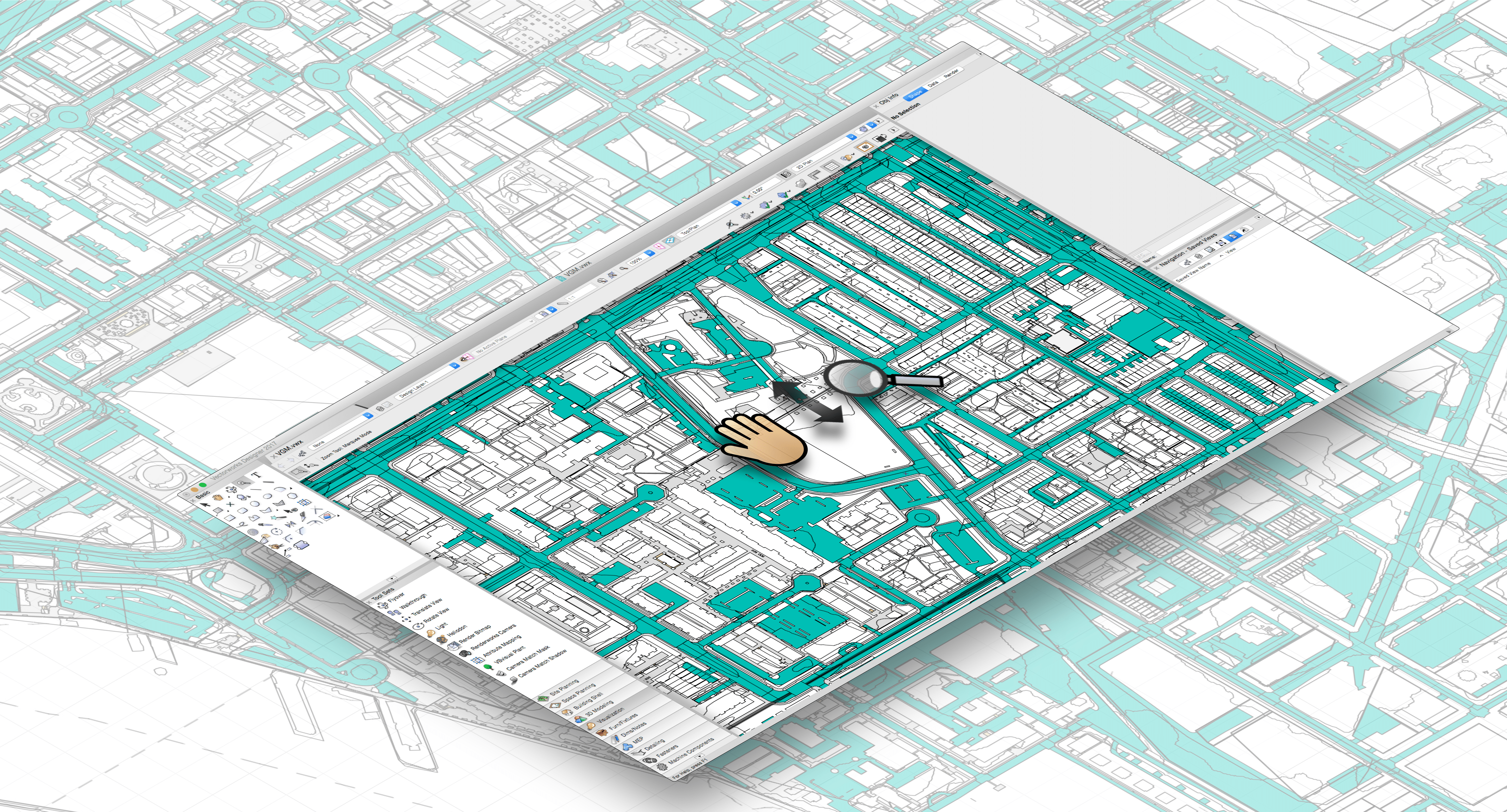
[Courtesy of Vectorworks]
Vectorworks Graphics Module
SAVE TIME AND USE AUTOMATED WORKSHEETS
The Hydrozone tool is another improvement, allowing designers to create zones for various water usage or enter plant types and their needs. It’s especially useful in places like California, where the MWELO (Model Water Efficient Landscape Ordinance) dictates strict water budgeting.
Without this tool, you’d spend a lot of time entering data in a worksheet, noting surface areas, types of irrigation, how much water plants require, and even the evapotranspiration rate where you live. “All of that … requires a lot of calculation. I used to work in California and spent a lot of time doing that,” says Lance Fulton, the Landmark planner who also worked on the tools.
But with the Hydrozone tool and automated water budget worksheets, Vectorworks does it all for you. Whether specifying lateral and main piping, sprinkler heads, drip systems, valves, or other components, automated and manual placement methods enable you to design, document, and estimate proposed and as-built systems efficiently. Two new water budget calculation worksheets are also due this year—one that conforms to the EPA WaterSense program, LEED certification, and SITES certification, and another for users in California. Worksheets vary by regulation or certification, but with Vectorworks, the entire process can be accomplished in minutes.
An efficient irrigation system design can significantly reduce overwatering by applying water only where it is required. Vectorworks began offering the tools to do just that in the fall of 2016, when it released its 2017 product line, which includes Vectorworks® Architect, Landmark, Spotlight, Vision, Designer, and Fundamentals. With Landmark, the global provider of cross-platform CAD and BIM design software has aimed to replace the conjecture and “rules of thumb” of old-school irrigation with scientific data.
Streamlined Design
Irrigation tools are among Vectorworks’ many new features that help to streamline the planning process, including calculating physical features and resource availability. Designers can create zones of similar watering needs with the new Hydrozone tool and use built-in worksheets to analyze for water efficiency, so meeting a site’s water budget allowance is simple.
Before designing a project’s landscape, a water budget provides the estimated amount of water to be used. The budget guides the user to make adjustments on water use as needed, while also taking into account the amount of rain an area receives or how much is evaporated naturally, or if the plants need a lot of water, and so on. A goal may indicate that you can only use so much water a year, requiring other adjustments be made up front. When you can get your water budget to a certain usage percentage, you can begin to specify the appropriate plants and other water-required features, knowing the project will be water efficient while also earning the project favorable credits toward LEED or SITES ratings.
The tools are like an answered prayer for some, says Bryan Goff, director of design + sciences at Grey Leaf Design. Goff helped test the new program for close to a year and provided feedback around his experience, but even he couldn’t predict how the end-product would exceed expectations. “It’s definitely been a missing piece,” he says, adding that most design software focuses in one area, and often irrigation is forgotten, especially in areas like the Midwest. But in places like California or Texas, irrigation design can be tricky and require adjustments after installation to meet strict mandates, especially as designers relied more on past experience and rules of thumb than scientific data.
Vectorworks continues to push the boundaries of what can be accomplished in design software, from more analytics to the nitty-gritty needs of designers, CEO Dr. Biplab Sarkar said in a previous gb&d interview. The new irrigation toolset provides granular data for realistic design outcomes while allowing for better water management. “Imagine that you want to design a golf course or a soccer field, and you want to design your water lines in such a way that it reduces your water consumption and also keeps the flow powerful enough to water everything. The program can help you maximize your water efficiency,” Sarkar says.
Doing More With Less
Users previously relied on Vectorworks for everything except irrigation, according to Eric Gilbey, the product marketing manager –Landscape Industries. “For irrigation they would have to buy a separate CAD program ($4,000–$5,000), and then a third party add-on ($1,000–$1,500). With us it’s all included in the Landmark edition of Vectorworks (MSRP $2,945). You don’t have to pay anything extra. And it’ll give you a more efficient
design as well.”
The Vectorworks irrigation toolset was developed using real performance data from equipment from vendors that are committed to water efficiency—companies like Hunter, Rain Bird, Toro, Netafim, and Irritrol. “It allows my firm to do things others just can’t,” Goff says. “We’re not just one step ahead—we’re 40 steps ahead of a lot of our competition because of what we can produce, how we can produce it, and we can scientifically prove where we’re at.”
When Goff was really able to dig into the design during testing, he discovered that the new tools went beyond his hopes of simply placing a sprinkler head in a spray zone, classifying it, and showing a line where the piping goes, for instance. He could see the water coverage based on precise calculations, and he could also account for pressure loss, determine whether larger pipe was needed, determine whether he needed more heads, choose a particular type of head, adjust nozzle size, and more. Where past designers might have said of their design, “It’s close, so we’ll overbuild it,” he could be exact.
Preventing Water Loss, Tree Rot, and More
Just this past autumn, Goff was out working on a large residential lot in Minnesota that had sizable plant beds and lawns and even a towering Sycamore tree—an uncommon sight in the region. “With standard irrigation installation, the installer would just come in and use a large rotor head and spray everything—spray down the trunk, they don’t care, it’s about getting the grass wet,” he says. “We’re able to design heads that aren’t spraying the trunk of the tree so it won’t cause rot or decay. We’re able to design accordingly. On top of that, we’re able to design root feeder systems that properly water the tree based on what an arborist has told us the tree needs.”
Where the installers of old would simply “eyeball” the project and do their best to get it right, making adjustments afterward, Goff is able to direct his efforts with proven data. While the latter is sure to become standard, the former often results in overwatered plants, sidewalk spray, and water blowing away across lawns. “We help ensure the system will perform as you design it to perform, so that it will not waste water and not damage any equipment,” says Lance Fulton, the Landmark product planner who worked with software engineers on the new tools.
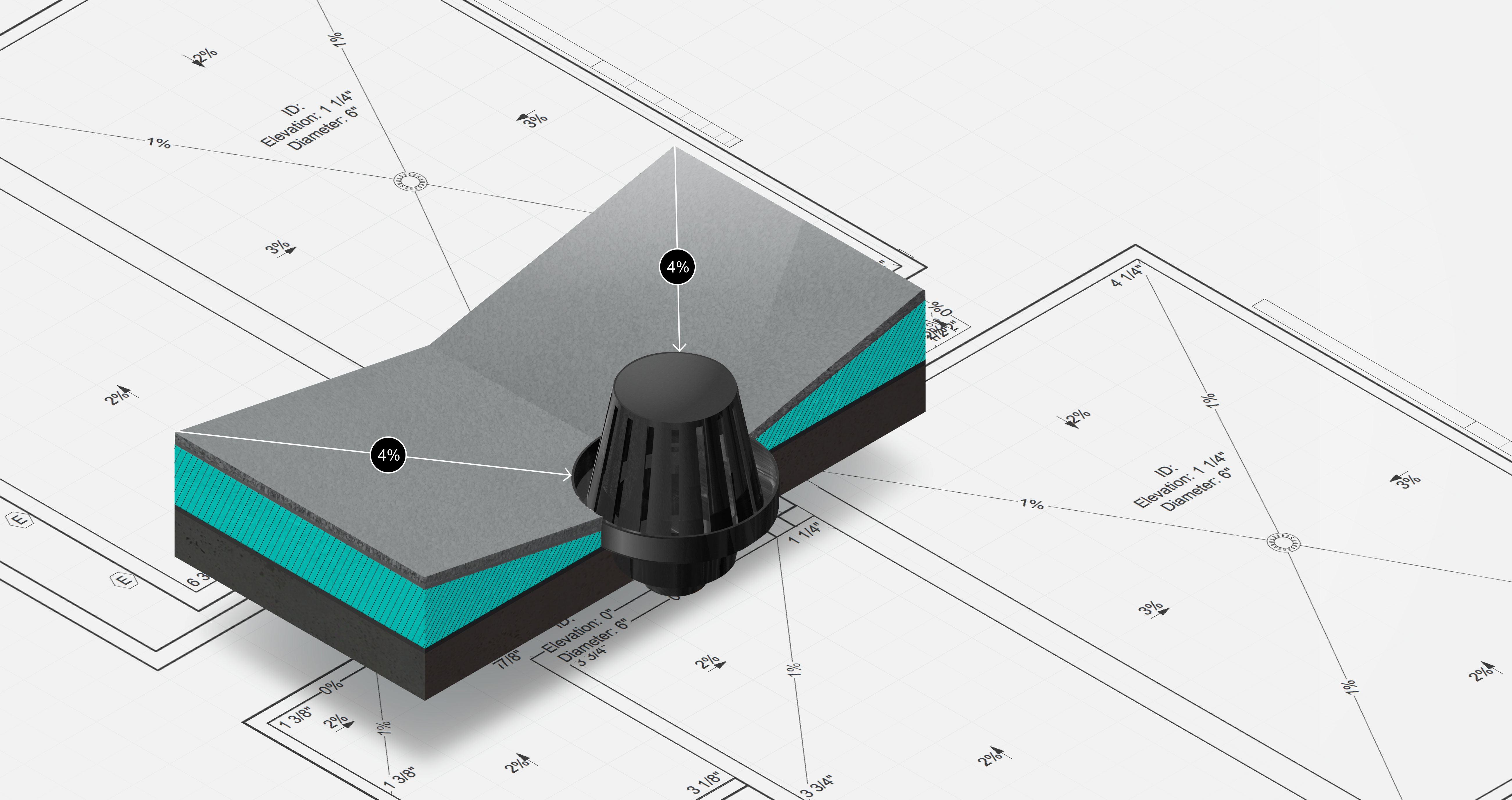
The Slab Tool helps Drainage
The slab tool is nothing new. Architects have been using it for years, but now the slab object can also incorporate drainage.
The slab drainage tool allows designers to create sloped slabs and flat roofs with tapered components. The feature ensures you’re making the right decision while documenting key data and allowing for easy change management across a given BIM design.
“The slab tool now identifies slopes for certain panels, ridges, or valleys, and locates drains to push the water toward. The individual slab components can also abide by slopes or not abide by slopes, dependent on the user. What’s even more, you can use this tool to accommodate a particular draining pattern so you can use materials more appropriately for your green roof. That’s important considering Vectorworks’ commitment to encourage designers to use green building processes wherever possible. Gone are the earlier limitations. “The components can now recognize a virtually sloped roof the way it’s intended to be designed, so the green roof can still be planned out,” says Gilbey.

